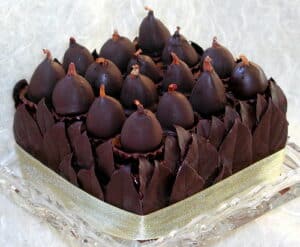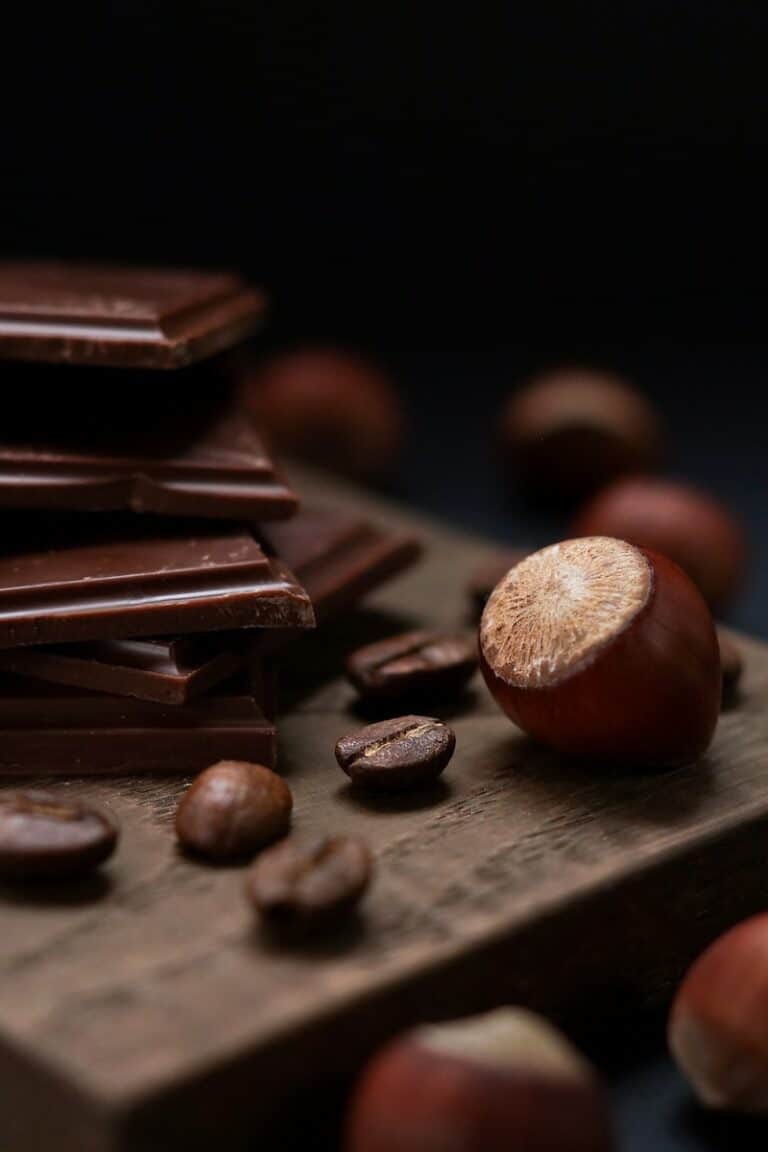When was chocolate introduced to Europe? The history of chocolate dates back thousands of years, with evidence of cacao beverages dating as far back as 1900 BC. Cacao beans, which come from the cacao tree, were originally cultivated in Central and South America and were used to create chocolate drinks. It wasn’t until the 16th century when chocolate was introduced to Europe, forever changing the history of chocolate and how it was consumed.

Early History of Chocolate in Central and South America
The early history of chocolate began in Central America, with archaeological sites dating back to 1900 BC in Puerto Escondido, Honduras. At these sites, ceramic vessels were found containing traces of cacao beans, which were used to create a bitter beverage. This bitter beverage was typically mixed with chili peppers and other spices, and was consumed for its health benefits.
The cacao plant, Theobroma cacao, was native to the tropical regions of Central and South America. The Aztec Empire, which spanned from southern Mexico to the Pacific coast, highly valued cacao beans and even used them as a form of currency. They would often consume cacao beverages, believing that it provided strength and energy.
When was Chocolate Introduced to Europe?
Christopher Columbus and the Introduction of Chocolate to Europe
When Christopher Columbus first encountered the New World in 1492, he also came across cacao beans for the first time. However, it wasn’t until his fourth voyage in 1502 that he brought back cacao beans to the Spanish court. Despite this introduction, chocolate would remain unknown to the majority of Europeans for nearly a century.
It wasn’t until Spanish conquistador Hernán Cortés arrived in Mexico in 1519 that Europeans began to take a serious interest in cacao beans. Cortés observed the importance of cacao in the Aztec Empire and saw its potential value. He brought back cacao beans and the knowledge of how to make the bitter beverage to Spain, where it was gradually introduced to Spanish royalty.

Spanish Friars and the Spread of Chocolate in Europe
Spanish friars played a crucial role in the spread of chocolate throughout Europe. They brought chocolate to monasteries in Spain, where it was consumed as a hot chocolate drink, sweetened with sugar. This new concoction quickly gained popularity among the Spanish court and soon spread to other European countries, including France, Italy, and England.
As the popularity of chocolate grew, so did the demand for cacao beans. Cacao plantations were established in various European colonies in the Americas, and cacao beans were imported back to Europe. European chocolate makers began to experiment with different ways of processing cacao beans, leading to innovations in chocolate production.
Dutch Cocoa and the Industrial Revolution
One significant development in the history of chocolate came from Dutch chemist Coenraad van Houten in the early 19th century. Van Houten invented a hydraulic press that could separate cocoa butter from roasted cacao beans, leaving behind a dry cake that could be ground into cocoa powder. This invention made it easier to produce chocolate and allowed for the creation of new chocolate products.
The Industrial Revolution also played a role in the mass production of chocolate. In 1828, the first chocolate factory was established in the Netherlands, which led to the creation of solid chocolate. This solid form of chocolate was made possible by combining cocoa powder, sugar, and cocoa butter, creating a more palatable and shelf-stable product.
The Invention of the Modern Chocolate Bar
The modern chocolate bar was created in the mid-19th century, with the invention of milk chocolate. In 1875, Swiss chocolatier Daniel Peter introduced the first milk chocolate bar, which combined cocoa powder, sugar, cocoa butter, and powdered milk. This new type of chocolate was smoother, creamier, and more appealing than previous chocolate bars.
Fry’s Chocolate, a British company, was the first to mass-produce chocolate bars in 1847. Their success paved the way for other chocolate companies, such as Cadbury and Nestlé, to create their own chocolate bars.
Chocolate Houses and the Rise of European Chocolate Culture
As chocolate became more widely available, it became a popular treat among European citizens. Chocolate houses began to appear throughout Europe, serving hot chocolate and other chocolate treats to the public. These establishments were similar to modern-day cafes and were often frequented by members of high society, including French royalty.
Chocolate in the Modern Era
Today, chocolate continues to be a beloved treat worldwide. The process of making chocolate has evolved over the centuries, from the bitter water consumed by the Aztecs to the sweet, creamy milk chocolate bars enjoyed by millions today.
With advancements in technology and mass production, chocolate bars can now be found in various flavors, shapes, and sizes, catering to different tastes and preferences. The history of chocolate in Europe demonstrates how a simple cacao bean from Central America could be transformed into one of the world’s most popular indulgences.
